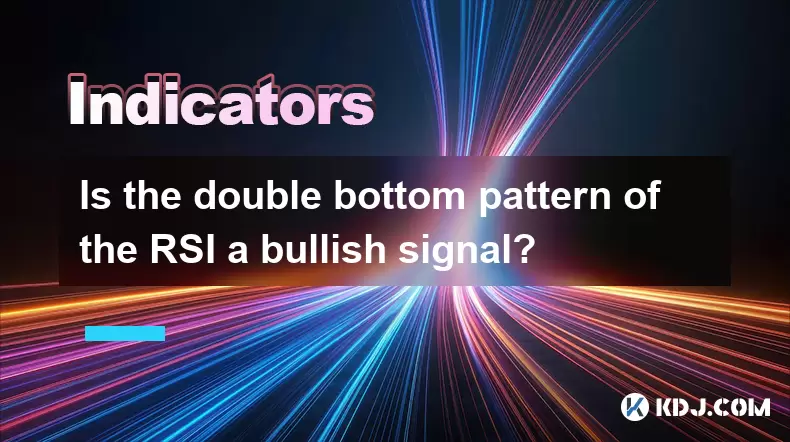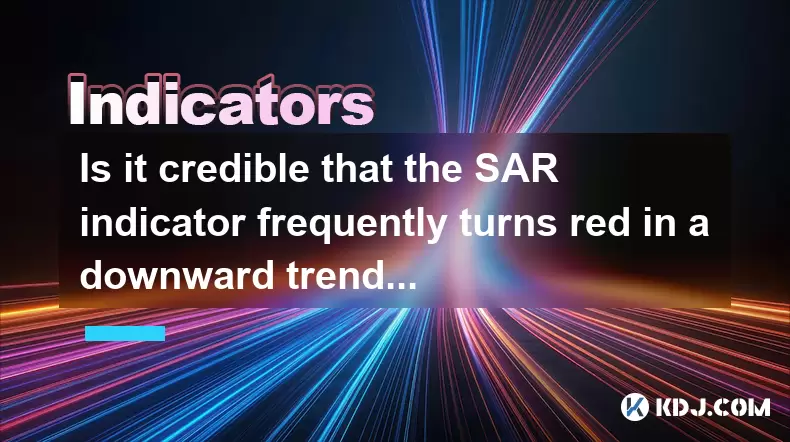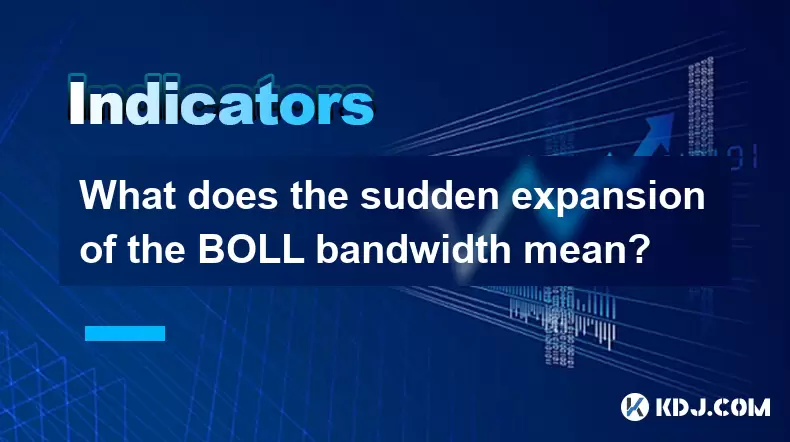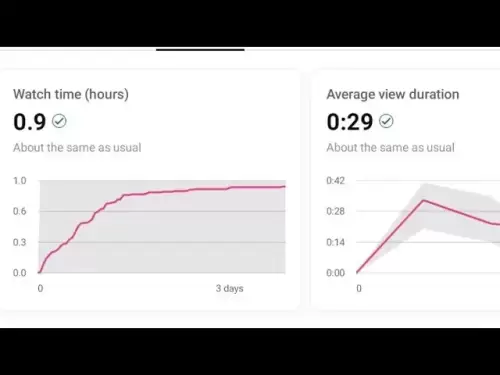-
 Bitcoin
Bitcoin $103,456.1111
0.49% -
 Ethereum
Ethereum $2,414.9631
0.02% -
 Tether USDt
Tether USDt $1.0006
0.05% -
 XRP
XRP $2.1083
0.24% -
 BNB
BNB $634.8760
-0.76% -
 Solana
Solana $139.8437
1.94% -
 USDC
USDC $0.9998
-0.01% -
 TRON
TRON $0.2737
0.97% -
 Dogecoin
Dogecoin $0.1602
0.20% -
 Cardano
Cardano $0.5737
1.08% -
 Hyperliquid
Hyperliquid $32.9779
-2.54% -
 Bitcoin Cash
Bitcoin Cash $474.8886
-1.80% -
 Sui
Sui $2.6272
-1.99% -
 Chainlink
Chainlink $12.4878
0.14% -
 UNUS SED LEO
UNUS SED LEO $8.9234
0.35% -
 Stellar
Stellar $0.2411
-0.18% -
 Avalanche
Avalanche $17.0274
-0.70% -
 Toncoin
Toncoin $2.8936
-1.11% -
 Shiba Inu
Shiba Inu $0.0...01112
-0.58% -
 Litecoin
Litecoin $82.6982
1.33% -
 Hedera
Hedera $0.1423
-0.05% -
 Monero
Monero $314.8455
3.26% -
 Ethena USDe
Ethena USDe $1.0006
0.01% -
 Polkadot
Polkadot $3.4043
1.14% -
 Dai
Dai $0.9999
0.01% -
 Bitget Token
Bitget Token $4.2848
-0.13% -
 Uniswap
Uniswap $6.8748
-5.45% -
 Pepe
Pepe $0.0...09661
0.52% -
 Pi
Pi $0.5359
1.19% -
 Aave
Aave $242.9168
-1.03%
Is the double bottom pattern of the RSI a bullish signal?
The RSI double bottom pattern signals a potential bullish reversal when the RSI forms two lows around the 30 level, indicating weakening bearish pressure and rising buying interest.
Jun 21, 2025 at 10:49 pm

Understanding the RSI Double Bottom Pattern
The Relative Strength Index (RSI) is a widely used technical indicator in cryptocurrency trading. It helps traders assess whether an asset is overbought or oversold, and can also signal potential reversals. One such reversal pattern that appears on the RSI chart is the double bottom.
A double bottom pattern on the RSI occurs when the RSI line drops below a certain level—typically 30—then rebounds, retraces, and falls back to the same level before rising again. This formation resembles the letter "W" and suggests that selling pressure has diminished and buyers are beginning to take control.
Important: The RSI double bottom should not be interpreted in isolation but rather in conjunction with price action and other indicators.
How the RSI Double Bottom Indicates Bullish Momentum
When the RSI forms a double bottom, it often reflects a shift in market sentiment. After a downtrend, the first low signals extreme bearish momentum, but as the RSI bounces back, it shows that bulls are starting to push prices higher. When the RSI dips again but fails to make a new low, this demonstrates that bears are losing strength.
This failure to create a lower low on the RSI chart indicates hidden buying interest. If the RSI then rises above the previous high between the two bottoms, it confirms the bullish reversal. Traders often see this as a sign to consider entering long positions.
- Key confirmation level: The midpoint between the two lows.
- Bullish trigger: A break above the resistance formed by the peak between the two bottoms.
Steps to Identify a Valid RSI Double Bottom Pattern
Recognizing a valid RSI double bottom requires careful observation and discipline. Here’s how to identify it step-by-step:
- Look for oversold conditions: Ensure the RSI dips below 30 at least twice.
- Identify two distinct lows: The second low should not fall significantly below the first one.
- Observe the reaction after the second low: There should be a noticeable upward movement following the second bounce.
- Confirm with a breakout: The RSI must rise above the intermediate high formed between the two lows.
- Correlate with price action: Check if the price chart is also showing signs of reversal like higher lows or bullish candlestick patterns.
Failure to meet any of these criteria may result in a false signal. Therefore, it's crucial to validate each condition before making a trade decision.
Combining the RSI Double Bottom with Price Chart Patterns
While the RSI double bottom is powerful on its own, combining it with traditional price chart patterns enhances its reliability. For instance, if the RSI shows a double bottom while the price forms a double bottom on the candlestick chart, the probability of a successful bullish reversal increases significantly.
Another effective combination involves using trendlines. Drawing a trendline across the swing highs between the two RSI lows can act as a resistance level. Once the RSI breaks above this line, it serves as a strong buy signal.
Additionally, volume analysis plays a key role. A surge in volume during the breakout confirms that institutional or large retail buyers are stepping in, further validating the bullish RSI double bottom signal.
Potential Pitfalls and Misinterpretations
Even though the RSI double bottom is considered a bullish pattern, there are several pitfalls traders should be cautious about:
- Misjudging the second low: Sometimes the RSI doesn’t truly retest the initial low, leading to premature entries.
- Ignoring timeframes: A double bottom on a 1-hour chart might not carry the same weight as one on a daily chart.
- Neglecting market context: In highly volatile crypto markets, short-term noise can distort the pattern.
- Trading without confirmation: Entering a trade before the RSI breaks above the intermediate peak increases risk.
To avoid these mistakes, traders should use multiple timeframes and wait for clear confirmation before executing trades based solely on the RSI double bottom.
Frequently Asked Questions
Q: Can the RSI double bottom appear in uptrends?
Yes, the RSI double bottom can occur even in uptrends, typically signaling a continuation rather than a reversal. In such cases, it may indicate that pullbacks are ending and the uptrend is resuming.
Q: What is the ideal timeframe to spot the RSI double bottom in crypto?
While the pattern can appear on any timeframe, daily and 4-hour charts are generally more reliable for spotting authentic RSI double bottom setups due to reduced noise and better confirmation.
Q: Should I always enter a trade when I see the RSI double bottom?
No, you should not automatically enter a trade. Always wait for the RSI to break above the intermediate high and cross-check with other tools like moving averages or volume indicators to increase your confidence.
Q: How does the RSI double bottom compare to the MACD bullish divergence?
Both are momentum-based reversal signals. However, the RSI double bottom focuses on specific levels (like 30), whereas MACD bullish divergence looks at the relationship between price and the MACD line. They can complement each other when used together.
Disclaimer:info@kdj.com
The information provided is not trading advice. kdj.com does not assume any responsibility for any investments made based on the information provided in this article. Cryptocurrencies are highly volatile and it is highly recommended that you invest with caution after thorough research!
If you believe that the content used on this website infringes your copyright, please contact us immediately (info@kdj.com) and we will delete it promptly.
- MAGACOIN FINANCE: The Low-Cap Crypto Set to Dominate 2025?
- 2025-06-22 04:25:12
- Trump, Wallets, and Binance: Decoding the Latest Crypto Moves
- 2025-06-22 04:25:12
- Altcoins, Social Media, and Trending Coins: What's the Buzz?
- 2025-06-22 04:45:12
- Unicorn Fart Dust, Meme Coins, and Ballpark Village: A Wild Ride in the Crypto World
- 2025-06-22 04:30:12
- ZA Miner, Cloud Mining, and Crypto Adoption: A 2025 Perspective
- 2025-06-22 04:45:12
- HBAR, BCH, and Web3 AI: What's Hot and What's Not in Crypto Right Now
- 2025-06-22 04:50:12
Related knowledge

Does the sudden contraction of ATR indicate the end of the trend?
Jun 20,2025 at 11:14pm
Understanding ATR and Its Role in Technical AnalysisThe Average True Range (ATR) is a technical indicator used to measure market volatility. Developed by J. Welles Wilder, ATR calculates the average range of price movement over a specified period, typically 14 periods. It does not indicate direction—only volatility. Traders use ATR to gauge how much an ...

Is it invalid if the DMI crosses but the ADX does not expand?
Jun 21,2025 at 09:35am
Understanding the DMI and ADX RelationshipIn technical analysis, the Directional Movement Index (DMI) consists of two lines: +DI (Positive Directional Indicator) and -DI (Negative Directional Indicator). These indicators are used to determine the direction of a trend. When +DI crosses above -DI, it is often interpreted as a bullish signal, while the opp...

How to filter false signals when the SAR indicator frequently flips?
Jun 21,2025 at 08:43pm
Understanding the SAR Indicator and Its BehaviorThe SAR (Stop and Reverse) indicator is a popular technical analysis tool used in cryptocurrency trading to identify potential reversals in price movement. It appears as a series of dots placed either above or below the price chart, signaling bullish or bearish trends. When the dots are below the price, it...

Is the trend continuation when the Williams indicator is oversold but there is no rebound?
Jun 20,2025 at 11:42pm
Understanding the Williams %R IndicatorThe Williams %R indicator, also known as the Williams Percent Range, is a momentum oscillator used in technical analysis to identify overbought and oversold levels in price movements. It typically ranges from 0 to -100, where values above -20 are considered overbought and values below -80 are considered oversold. T...

Is it credible that the SAR indicator frequently turns red in a downward trend?
Jun 22,2025 at 12:07am
What Is a Bitcoin Wallet and Why Do You Need One?A Bitcoin wallet is a digital tool that allows users to store, send, and receive Bitcoin. Unlike traditional wallets that hold physical currency, Bitcoin wallets do not actually store the cryptocurrency itself. Instead, they manage the private keys that grant access to your Bitcoin on the blockchain. Thes...

What does the sudden expansion of the BOLL bandwidth mean?
Jun 21,2025 at 01:49pm
Understanding the BOLL IndicatorThe BOLL (Bollinger Bands) indicator is a widely used technical analysis tool in cryptocurrency trading. It consists of three lines: a simple moving average (SMA) in the center, with upper and lower bands calculated based on standard deviations from that SMA. These bands dynamically adjust to price volatility. When trader...

Does the sudden contraction of ATR indicate the end of the trend?
Jun 20,2025 at 11:14pm
Understanding ATR and Its Role in Technical AnalysisThe Average True Range (ATR) is a technical indicator used to measure market volatility. Developed by J. Welles Wilder, ATR calculates the average range of price movement over a specified period, typically 14 periods. It does not indicate direction—only volatility. Traders use ATR to gauge how much an ...

Is it invalid if the DMI crosses but the ADX does not expand?
Jun 21,2025 at 09:35am
Understanding the DMI and ADX RelationshipIn technical analysis, the Directional Movement Index (DMI) consists of two lines: +DI (Positive Directional Indicator) and -DI (Negative Directional Indicator). These indicators are used to determine the direction of a trend. When +DI crosses above -DI, it is often interpreted as a bullish signal, while the opp...

How to filter false signals when the SAR indicator frequently flips?
Jun 21,2025 at 08:43pm
Understanding the SAR Indicator and Its BehaviorThe SAR (Stop and Reverse) indicator is a popular technical analysis tool used in cryptocurrency trading to identify potential reversals in price movement. It appears as a series of dots placed either above or below the price chart, signaling bullish or bearish trends. When the dots are below the price, it...

Is the trend continuation when the Williams indicator is oversold but there is no rebound?
Jun 20,2025 at 11:42pm
Understanding the Williams %R IndicatorThe Williams %R indicator, also known as the Williams Percent Range, is a momentum oscillator used in technical analysis to identify overbought and oversold levels in price movements. It typically ranges from 0 to -100, where values above -20 are considered overbought and values below -80 are considered oversold. T...

Is it credible that the SAR indicator frequently turns red in a downward trend?
Jun 22,2025 at 12:07am
What Is a Bitcoin Wallet and Why Do You Need One?A Bitcoin wallet is a digital tool that allows users to store, send, and receive Bitcoin. Unlike traditional wallets that hold physical currency, Bitcoin wallets do not actually store the cryptocurrency itself. Instead, they manage the private keys that grant access to your Bitcoin on the blockchain. Thes...

What does the sudden expansion of the BOLL bandwidth mean?
Jun 21,2025 at 01:49pm
Understanding the BOLL IndicatorThe BOLL (Bollinger Bands) indicator is a widely used technical analysis tool in cryptocurrency trading. It consists of three lines: a simple moving average (SMA) in the center, with upper and lower bands calculated based on standard deviations from that SMA. These bands dynamically adjust to price volatility. When trader...
See all articles
























































































